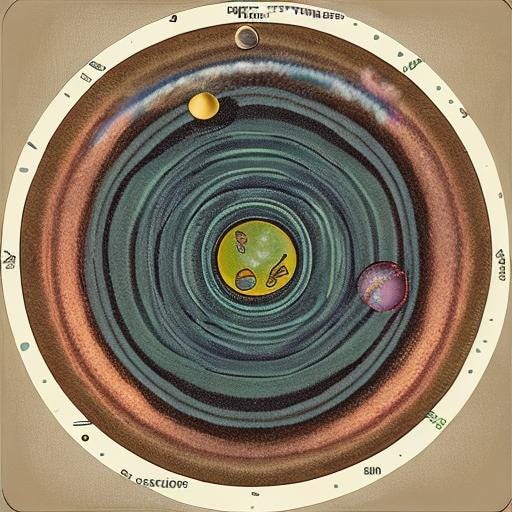Lots of small planets around small stars have circular orbits
Orbital properties of planets around low-mass stars appear similar to those around Sun-type stars, which may be good news for habitability
The most common stars in the universe are several times smaller than the Sun. They are known as red dwarf stars, and many of them host planets smaller than Neptune. A new study suggests that such small planets around red dwarf stars commonly exhibit circular orbits, which may increase the chances that some of these planets are habitable.
Not every star is quite like our Sun: some stars are larger, and others are much smaller and known to astronomers as red dwarf or M dwarf stars. Red dwarfs — which themselves are the most common type of stars — are known to host small planets at a higher rate than stars like our Sun.

The universe is thus filled with planets the size of Earth or Neptune orbiting small red dwarf stars. The shape of their orbits isn’t generally known. Some planets, like our own Earth, move on a nearly perfectly circular orbit around the Sun, meaning the distance between Earth and Sun never changes by much. Mercury’s orbit is more elliptical — its distance to the Sun ranges from about 46 million km to almost 70 million km throughout its orbit. Many comets have extremely elliptical orbits, moving alternately close to the Sun and retreating to great distances.
A new study by University of Florida researchers Sagear and Ballard sheds light on the orbital properties of small planets orbiting red dwarfs. They found that when there are multiple planets orbiting the same star, the orbits are typically nearly perfectly circular. When only one planet around a star is observed — though more planets may be present even if they are undetected — the orbits are more elliptical, though only moderately so, at levels similar to that of Mercury. The study has just been published in the Proceedings of the National Academy of Sciences and an open-access copy is available on the ArXiv.
These findings imply that about 30% of small planets around M dwarf stars have nearly circular orbits. The other planets have moderately eccentric orbits. This may make them less likely to be habitable, as a result of heat generated by tidal effects on these planets. This effect may be particularly important to assess habitability of planets when they orbit red dwarfs. Lead author Sheila Sagear, PhD candidate at the University of Florida, said to the Extrasolar Times:
“Understanding orbital eccentricity is uniquely critical for M dwarf planets, whose habitable zones are close-in and narrow. With this result, we can better understand planet occurrence, formation, and evolution for our closest neighbors that are most likely to resemble Earth.”
To measure the orbital properties of these planets, Sagear and Ballard made use of observations from NASA’s Kepler telescope. They studied a sample of 163 planets orbiting 101 stars, which were observed to transit by Kepler. Careful modelling of the transits, in combination with detailed knowledge of the stars they orbit, allowed the authors to infer their orbital eccentricity. This is because the duration of a transit is influenced by the orbital eccentricity as well as the density of the star — if the latter is known, the level of circularity of an orbit can be inferred from the transit.
The same technique has previously been used to study the eccentricity of planets orbiting stars more similar to our own Sun. The eccentricity distribution of planets around Sun-type stars — known to astronomers as FGK stars — appears similar to that of planets around red dwarfs, suggesting a common mechanism that shapes their orbits. This poses challenges to a common theory that elliptical orbits are linked to giant planets in the same system, according to Sagear:
“Eccentricity does not appear to depend much on stellar mass, if at all. This challenges some of our hypotheses about how eccentric orbits came to be. M dwarfs host fewer giant planets than FGK dwarfs, so giant planet perturbations may not be necessary to produce eccentric orbits.”
The study by Sagear & Ballard was published by Proceedings of the National Academy of Sciences on 30 May 2023.



